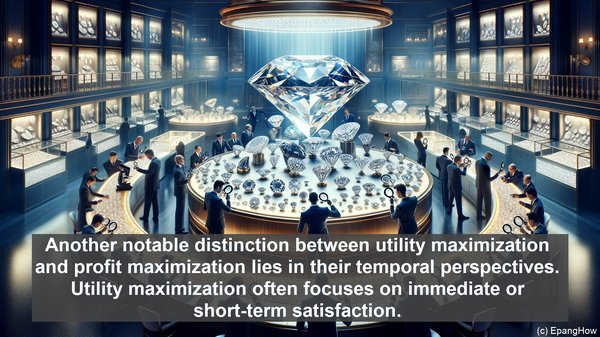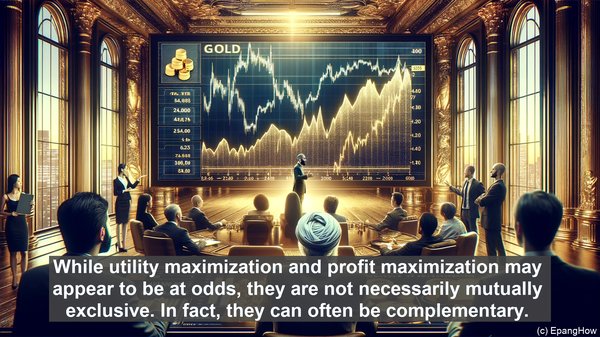Introduction: The Quest for Optimization
Hello, everyone! In the realm of economics, the pursuit of optimization is a central theme. Whether it’s individuals making choices or businesses strategizing, the aim is to maximize outcomes. Two key concepts that underpin this quest are utility maximization and profit maximization. While they may seem similar at first glance, a closer examination reveals their distinctive nature.

Utility Maximization: The Individual’s Perspective
Utility maximization primarily concerns individuals and their decision-making processes. It revolves around the idea that people aim to maximize their satisfaction or well-being when faced with choices. This concept is rooted in the notion of utility, which represents the subjective value or benefit an individual derives from consuming a good or service. The crux of utility maximization lies in allocating resources in a way that maximizes overall satisfaction.
Factors Influencing Utility Maximization
Several factors come into play when it comes to utility maximization. One of the key considerations is the principle of diminishing marginal utility. This principle suggests that as an individual consumes more of a particular good or service, the additional utility derived from each unit diminishes. For instance, the first slice of pizza may bring immense satisfaction, but the tenth slice may not be as enjoyable. This principle guides individuals in making choices that optimize their overall utility.
Profit Maximization: The Business Perspective
While utility maximization focuses on individuals, profit maximization is a core objective for businesses. It centers around the idea that companies strive to maximize their financial gains or profitability. This involves a range of considerations, including revenue generation, cost management, and market dynamics. The ultimate goal is to ensure that the business’s income surpasses its expenses, resulting in a positive bottom line.
Factors Influencing Profit Maximization
Profit maximization is influenced by various factors. One of the key determinants is the demand for the product or service. Understanding the market dynamics, such as consumer preferences and competition, is crucial in setting the right price and determining the quantity to produce. Cost considerations, including production costs, labor expenses, and overheads, also play a significant role. Striking the right balance between revenue and costs is essential for profit optimization.
Divergent Approaches: Short-Term vs. Long-Term
Another notable distinction between utility maximization and profit maximization lies in their temporal perspectives. Utility maximization often focuses on immediate or short-term satisfaction. Individuals make choices based on their current preferences and needs. In contrast, profit maximization typically takes a longer-term view. Businesses strategize not just for immediate gains but also for sustained profitability and growth. This often involves investment, innovation, and market positioning.

Complementary or Contradictory?
While utility maximization and profit maximization may appear to be at odds, they are not necessarily mutually exclusive. In fact, they can often be complementary. For instance, a business that prioritizes customer satisfaction and delivers high utility through its products or services is likely to attract more customers and, consequently, generate greater revenue. Similarly, an individual who makes choices that align with their long-term financial goals is likely to experience enhanced well-being.
